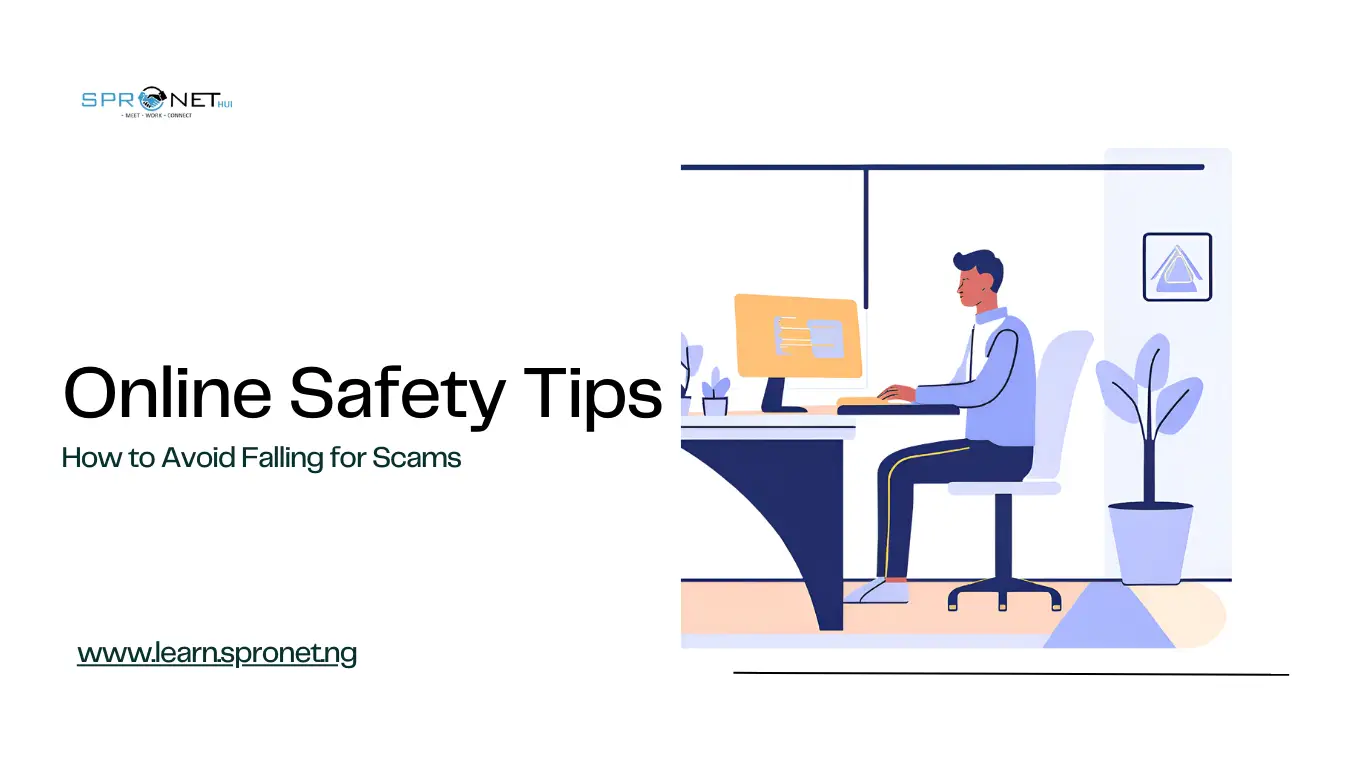Online Safety Tips: How to Avoid Falling for Scams
In today’s interconnected world, cybercriminals and scammers are constantly evolving their tactics to deceive individuals and businesses. From phishing emails to fake websites, these scams can lead to devastating consequences like identity theft and financial loss. Protecting yourself online requires a proactive approach to recognizing scams before they occur. In this post, we’ll walk through the best online safety tips that will help you avoid falling for scams and keep your personal and financial information secure.
1. Keep Your Software and Devices Updated
One of the most fundamental ways to protect yourself from scams is to ensure that your devices are running the latest versions of operating systems and software. Cybercriminals often exploit vulnerabilities in outdated software to gain access to your personal information. By regularly updating your system, you’re minimizing the risk of malware infections and other security threats.
Many updates include security patches that address recent vulnerabilities. Always enable automatic updates for your operating system, web browser, and security software to stay protected.
2. Be Wary of Unsolicited Emails and Messages
Phishing attacks remain one of the most common ways scammers try to steal your personal information. These scams often come in the form of emails, social media messages, or text messages that appear to be from legitimate companies or organizations. They will typically ask you to click on a link or provide sensitive information such as your passwords, bank account details, or credit card numbers.
To avoid falling for these scams, follow these safety tips:
- Do not click on links in unsolicited emails or messages.
- Always verify the sender’s email address.
- Look for grammatical errors or suspicious language.
- Hover over links to see where they lead before clicking.
If you receive a message claiming to be from a trusted source, such as your bank or a government agency, visit their official website directly instead of using the link provided in the message.
3. Use Strong and Unique Passwords for Every Account
Weak or reused passwords make you a prime target for cybercriminals. Scammers often use brute-force attacks or stolen data from previous breaches to try and access your accounts. To protect yourself, use a strong, unique password for every account. A strong password should include:
- A mix of upper and lowercase letters
- Numbers and symbols
- At least 12 characters
To make this easier, consider using a password manager to generate and store your passwords securely. This reduces the risk of using the same password across multiple sites, which can lead to multiple accounts being compromised in a single breach.
4. Verify Websites Before Entering Personal Information
Scammers often create fake websites that look identical to real ones in an attempt to steal your personal information. These websites typically lack SSL certificates, which are used to encrypt data between you and the website. You can tell if a site is secure by looking for the padlock symbol and “https” in the URL.
Additionally, take the following steps to verify that a website is legitimate:
- Use Whois lookup tools to verify the website’s domain registration.
- Check for customer reviews and business registration.
- Use scam detection sites like ScamAdviser to evaluate the website’s reputation.
If you’re shopping online, ensure the website uses trusted and secure payment methods. Avoid entering any sensitive information on websites that seem suspicious.
5. Enable Two-Factor Authentication (2FA) on Your Accounts
Adding an extra layer of security with two-factor authentication (2FA) can prevent unauthorized access to your online accounts, even if your password is compromised. 2FA requires you to provide a second form of verification, usually a one-time code sent to your phone or email, in addition to your password.
Many major platforms—such as Google, Facebook, and financial institutions—now offer 2FA. Enabling it on your accounts significantly reduces your risk of falling victim to account takeovers, identity theft, and other types of online fraud.
6. Report Scams Immediately
If you come across a scam or realize you’ve been targeted, it’s important to report the incident immediately. Reporting scams not only helps you potentially recover any lost funds, but it also helps prevent others from falling victim.
- Contact your financial institution if you’ve entered sensitive information on a fraudulent website.
- Report the scam to authorities such as the Federal Trade Commission (FTC) or your country’s consumer protection agency.
- Use platforms like Scamwatch or Better Business Bureau (BBB) to report suspicious websites or businesses.
Acting quickly can minimize the damage and help authorities shut down fraudulent operations.
Conclusion: Stay Vigilant to Stay Safe
Staying safe online requires constant vigilance. By following these essential tips—keeping your software updated, being cautious of unsolicited messages, using strong passwords, verifying websites, enabling 2FA, and reporting scams—you can significantly reduce your risk of falling victim to online fraud.
Upsell: Take Control of Your Online Safety with Our Cybersecurity Course
Want to learn even more about protecting yourself from online scams and cyber threats? Enroll in our Cybersecurity Course at Spronet Hub Academy. This comprehensive course is designed to teach you the latest security techniques, how to spot potential scams, and how to safeguard your personal information. Whether you’re an individual or a business owner, mastering cybersecurity is a critical skill in today’s digital world.
Sign up now to stay one step ahead of scammers and secure your future!

1 Comment.